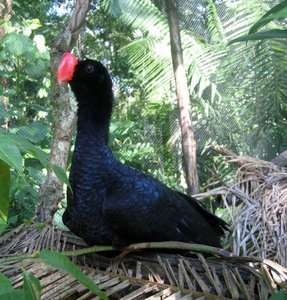
Mitu mitu
SUBFAMILY
Cracinae
TAXONOMY
Crax mitu Linnaeus, 1766, Brazil and Guiana = northeastern
Brazil. Monotypic.
OTHER COMMON NAMES
English: Bare-eared curassow; French: Hocco mitou; German:
Mituhokko; Spanish: Paujн de Alagoas.
PHYSICAL CHARACTERISTICS
About 32.5 in (83 cm) in length; males weigh about 104 oz
(2.960 g); females weigh about 97 oz (2,745 g). Shorter head
crest and tall, narrow red comb running along the forehead and
upper mandible of the beak. Lacks dense feathering in the auricular
region, hence its alternate name of bare-eared curassow.
DISTRIBUTION
This species was endemic to Alagoas, Brazil, but is now extinct
in the wild and survives only in captivity.
HABITAT
Extinct in the wild, but formerly found in lowland forest.
BEHAVIOR
Little is known, though the birds have been raised successfully
in captivity.
FEEDING ECOLOGY AND DIET
Little known. Fruit was found in the stomach of a specimen
collected in 1951; and three birds were spotted eating fruit in
the late 1970s.
REPRODUCTIVE BIOLOGY
One nest from the late 1970s was found in a tree amidst much
foliage cover. Captive birds are apparently sexually mature after
a couple of years, and the clutch size is often two eggs, as is
the case with most curassows.
CONSERVATION STATUS
This species is Extinct in the Wild, and most of the region it
lived in before has been converted to soybean plantations. A
small population persists at two collections in Brazil, jointly exceeding
50 birds in the year 2000.
SIGNIFICANCE TO HUMANS
These birds have been hunted for food. Their survival depends
upon the populations currently in captivity.
Other popular Animals
Photo Gallery of - Alagoas curassow
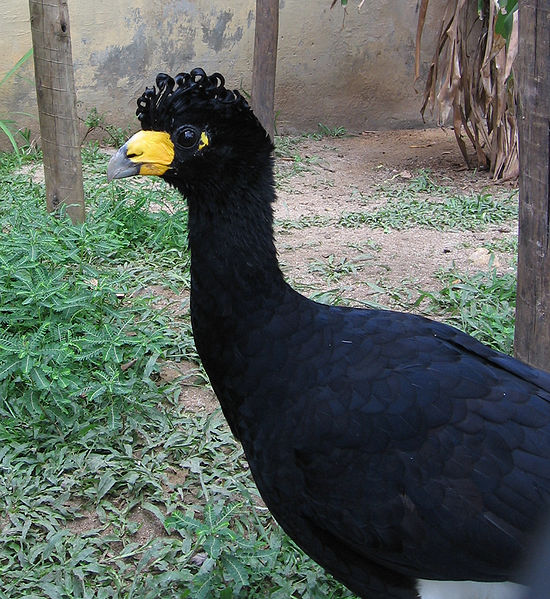
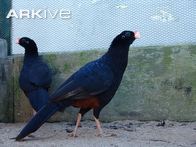
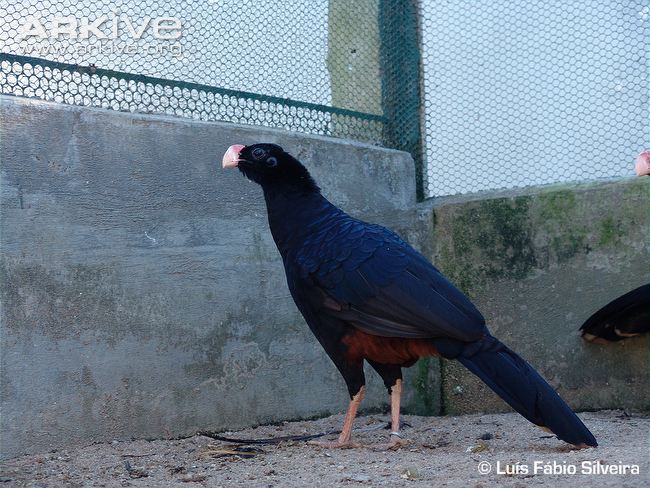
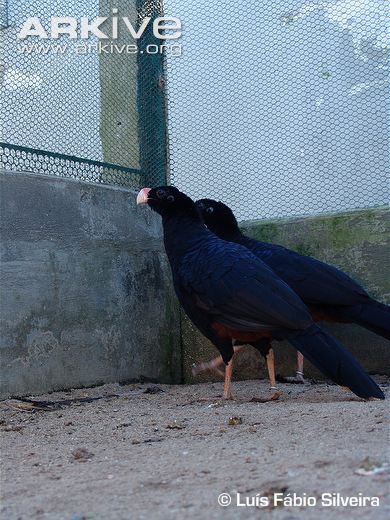
 Animalia Life
Animalia Life